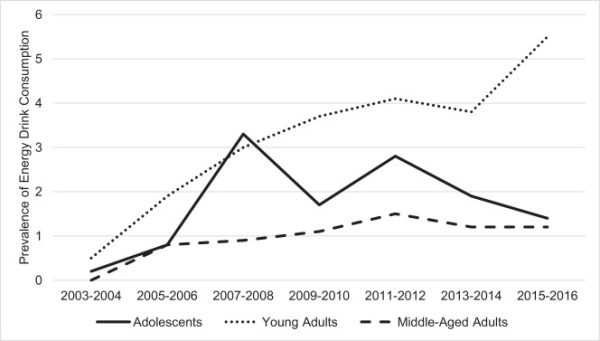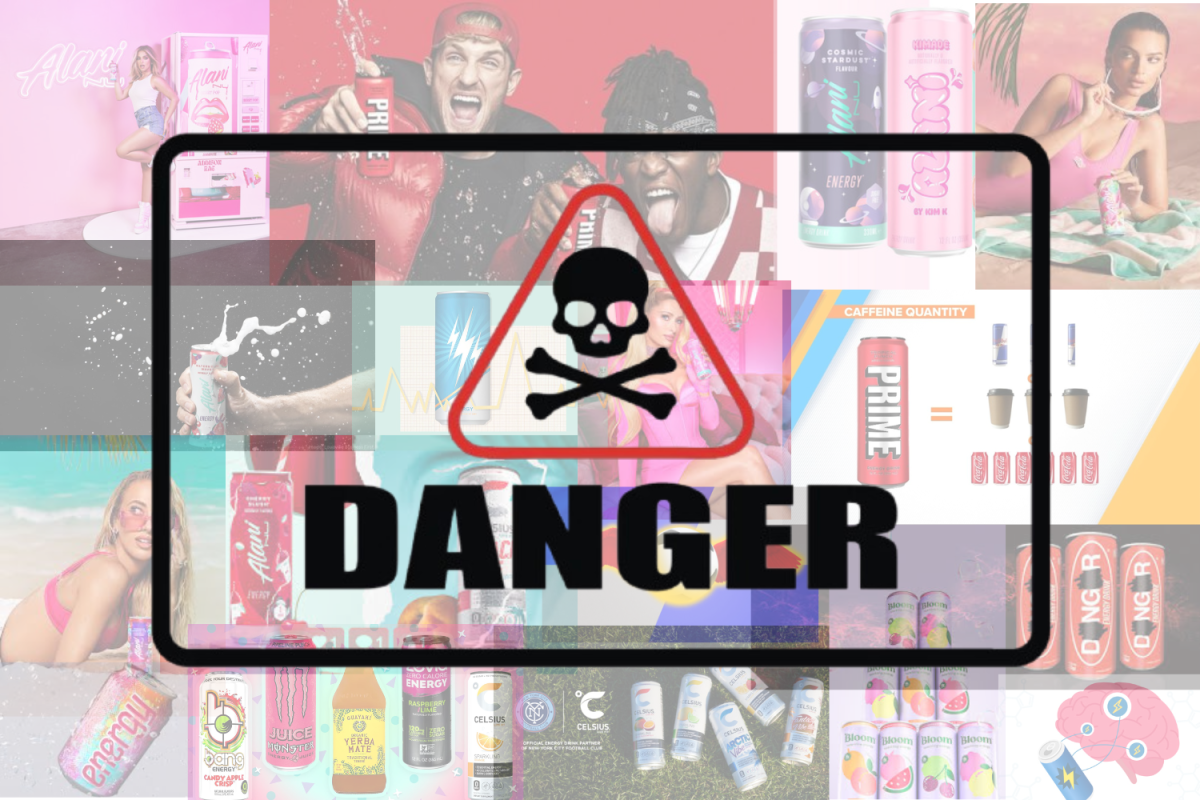With approximately 54 percent of the world consuming energy drinks daily, these beverages have become a global staple, yet their potential health risks, especially for young consumers, can not be ignored according to uclahealth.org. Since 1962, the invention of stimulant beverages and energy drink consumption has grown. They have become increasingly popular over the last six decades, largely due to social marketing, according to gobigenergy.com. Although energy drinks positively impact productivity and energy levels, they pose significant health risks, especially for adolescents. Thus, it is imperative that parents and educators raise awareness about the dangers of energy drinks and set a good example for teenagers.
Energy drinks typically contain high levels of caffeine, sugar, and various legal stimulants, which combined pose significant health risks for children, according to sutterhealth.org. Prime, a new popular energy drink advertised for children, has 200 milligrams (mg) of caffeine, dangerously high compared to the recommended 100mg of caffeine per day, according to health.com. Caffeine is a stimulant that increases alertness, giving a jolt of energy when combined with sugar. In the United States (US), 30 percent of adolescents regularly consume energy drinks, according to uclahealth.org. Enticing flavors and alluring packaging draw consumers, masking dangerous ingredients inside. Many students rely on caffeinated drinks to get through the school day, which can lead to an addiction, according to nfhs.org. This habit exposes adolescents to excessive amounts of toxic ingredients while setting the stage for heart attacks and premature health issues. People often consume energy drinks to boost energy and productivity, believing they help reduce anxiety and stress. However, frequent consumption can lead to poor sleep quality and exacerbate mental health issues, such as increased anxiety and depression, according to healthline.com. Given these risks, it is clear that energy drinks pose a serious danger to adolescents’ physical and mental health. Hence, students need to avoid them to protect their well-being.

The media plays a critical role in shaping the perception of energy drinks, particularly through marketing strategies that appeal to younger audiences. Brands like Red Bull use vibrant packaging, catchy slogans, and sponsorships of popular sports teams and influencers on social media platforms, such as TikTok and Instagram. These platforms present energy drinks as fun and trendy, and the candy-like flavors further normalize their consumption among youth, according to uclahealth.org. Brands often market the drink as a natural supplement, but instead, they are deceiving consumers, specifically adolescents in 2023, into purchasing their drinks. Various eye-catching advertisements contributed to the 193 billion dollars of energy drink sales, according to cdc.gov. Social media has fueled a surge in energy drink consumption among younger consumers by glamorizing these products and downplaying their potential dangers.
Major brands like Red Bull, Monster, Prime, and Alani Nu also invest in collaborations with high-profile figures such as Ms. Kim Kardashian and Mr. Logan Paul. Their influence on social media reaches 90 percent of teenagers, convincing them to purchase these highly caffeinated drinks, according to pmc.ncbi.nlm.nih.gov. Showcasing celebrities also convinces young consumers that drinking these high-energy drinks suggests that the drinks will help children reach these unattainable lifestyles, according to new-nutrition.com. Energy drink brands are blurring the lines between entertainment and health, leaving adolescents exposed to the potential health risks of excessive caffeine and sugar consumption. Energy drink brands blur the lines between entertainment and health, which exposes adolescents to the potential health risks of excessive caffeine and sugar consumption.
Dr. Stephanie Nguyen Lai, a pediatrician at the Palo Alto Medical Foundation, plays a crucial role in raising awareness about the impact of energy drinks on children’s health. She urges parents and children not to be misled by brands claiming to be “natural” and to avoid energy drinks altogether. With a focus on preventative care, Dr. Stephanie Nguyen Lai emphasized the importance of educating children early about the dangers of these highly caffeinated beverages.

“As a parent, it is important to talk with your adolescent and explain the risks of these products,” Dr. Lai said, according to sutterhealth.org. “Caffeine is a drug and is not recommended for children, particularly in these high quantities. Moreover, these drinks are especially dangerous when mixed with alcohol, which many young people do.”
While energy drinks allow students to be more focused and make better use of their study time, they can also lead to issues like dependence and potential health risks if consumed excessively. Parents and educators must educate their children about the potential health risks associated with energy drinks. Energy drinks pose dangers for all adolescents due to the detrimental effects on the nervous system and the risks of combining them with alcohol. The surge in celebrity promotions has made these risks more apparent recently, therefore parents need to educate children about these potential dangers before it is too late.
Featured Image by Ellie Furman ’26




